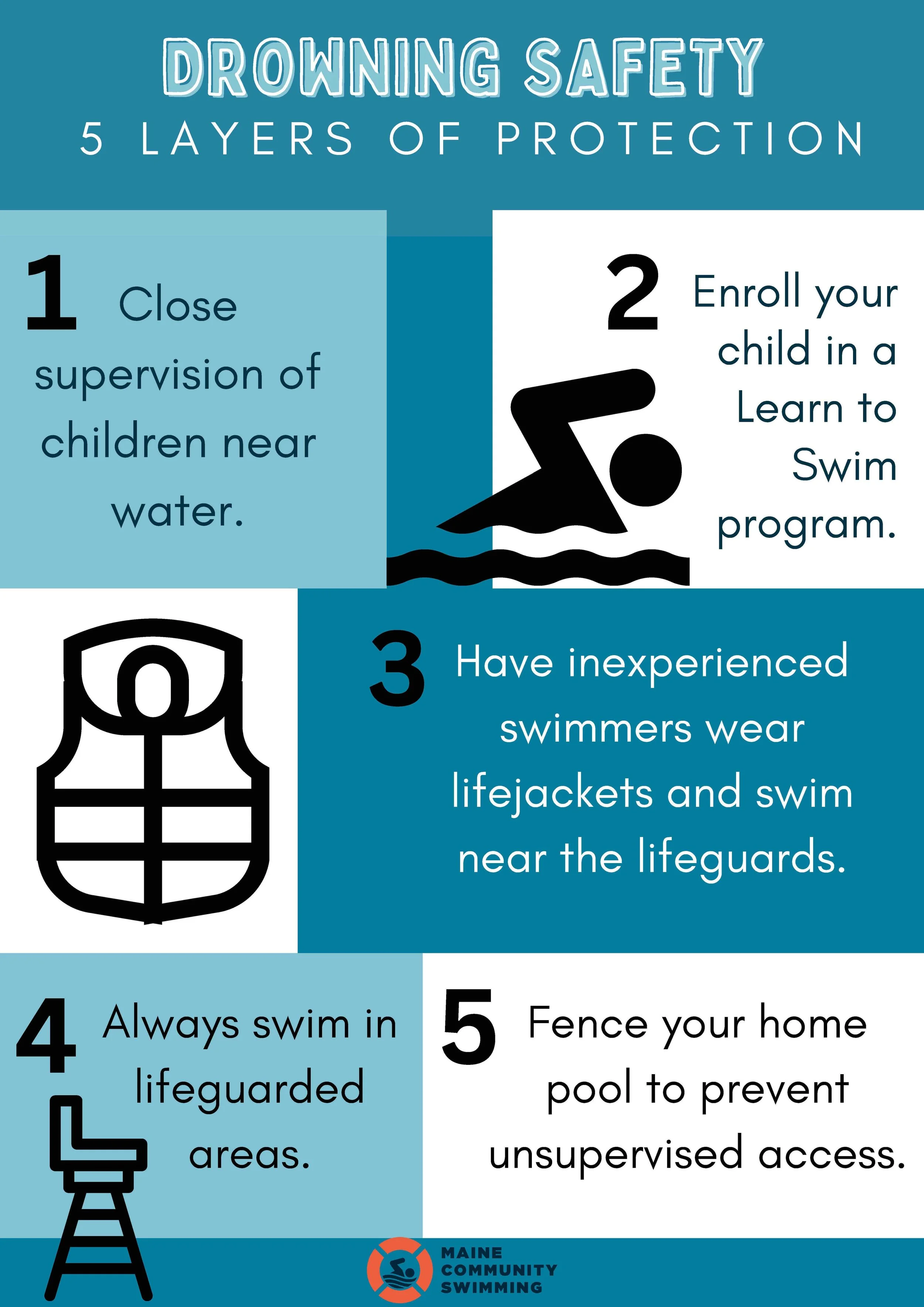Water Safety Resources Within Reach
Check out our growing library of water safety infographics and resources below to share with members of your community today.
Drowning Safety:
The 5 Layers of Protection
Close supervision of children near water.
Enroll your child in a Learn to Swim program.
Have inexperienced swimmers wear lifejackets and swim near the lifeguards.
Always swim in lifeguarded areas.
Fence your home pool to prevent unsupervised access.
Sun Safety Tips
Be Sun Smart: Wear sunscreen and protective clothing — including sunglasses — to protect against UV rays. And don’t forget a hat!
Avoid staying in the sun for extended periods of time. Seek shade under a tree or umbrella.
Stay Hydrated. Drink water thoroughout the day to replace fluid lost to sweat & heat. Don’t wait for extreme thirst to drink.
Wear a Hat.
Take Breaks.
Swimwear Safety
Swimsuit Color Safety Tips:
Neon colors, especially neon orange, are the most visible under water – either in a pool or open water
Visibility is much better on the surface – encourage your children to stay in lifejackets or use floatation devices no matter how old or how good of a swimmer they are
Think bright & contrasting – wear a color that contrasts the most with either the bottom of the pool, lake, river, or ocean
Adult supervision is the most effective way to keep children safe in the water
Text and graphic from Prairie Lakes Health & Wellness Blog
Published June 20th, 2024
Presumpscot River
Safety Signage
Taking a dip in the Presumpscot River? Don’t forget these key safety reminders, now posted along the waterway:
No lifeguard on duty. Swim at your own risk.
Never swim alone.
Be aware of strong and unpredictable currents.
"Being water safe means having the confidence and ability to navigate water environments safely.
It's not just about avoiding drowning; it's about equipping individuals with the necessary skills and knowledge to assess risks, make informed decisions, and respond effectively in water-related situations."
— Executive Director Brooke Teller






